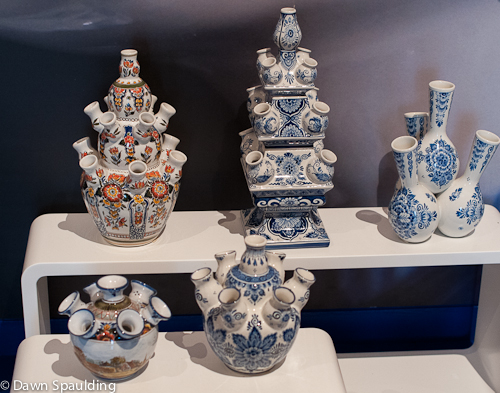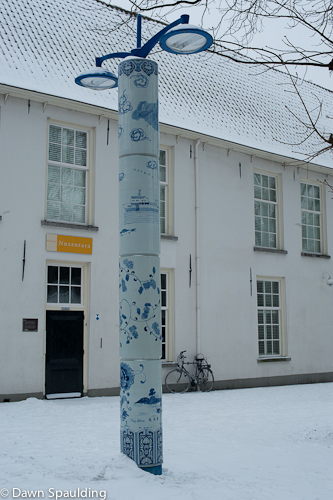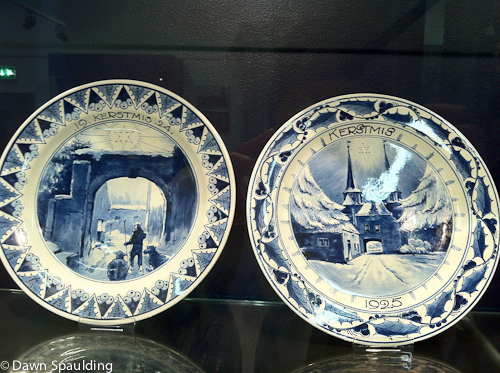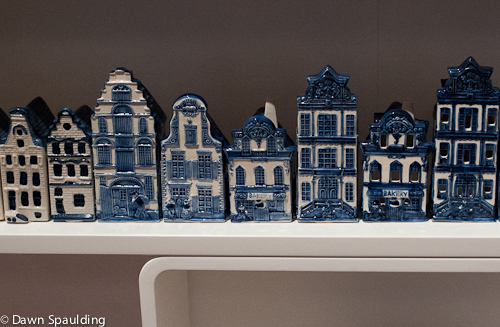
Signature vases
Delft’s most famous product is its blue and white pottery. If you haven’t already seen it on a plate, maybe a vase, perhaps floor tiles or a thousand other items, get ready to be inundated. As you might imagine, here in Delft, delftware is everywhere – on the streets, in museums, in restaurants and shops. Just when you think you’ve escaped it, a blue and white trinket or jar will pop up.

Even lamposts get the treatment!
The earliest glazed pottery came out of Antwerp in the 16th century. It was tin-glazed, which meant a white, opaque glaze containing tin oxide was applied to earthenware. The process spread to other parts of the country such as Amsterdam, Haarlem, Gouda and Rotterdam.

Christmas plates
Initially, delftware featured Dutch landscapes, portraits and religious motifs.

If you’ve flown KLM, these replicas of Dutch houses will look familiar
In the early 17th century, the Netherlands imported Chinese porcelain, which became very popular. Due to political reasons, the supply to Europe slowed so Delft factories began copying the designs. Soon, Delft was a major producer of the blue and white pieces. It was such a huge field that half of Delft’s professional population worked in the industry.
In the mid-18th century, British and German manufacturers began making and exporting the product on the cheap, so Dutch production slowed. Today, only one factory, Royal Delft, is in operation.
2 Responses to Delftware